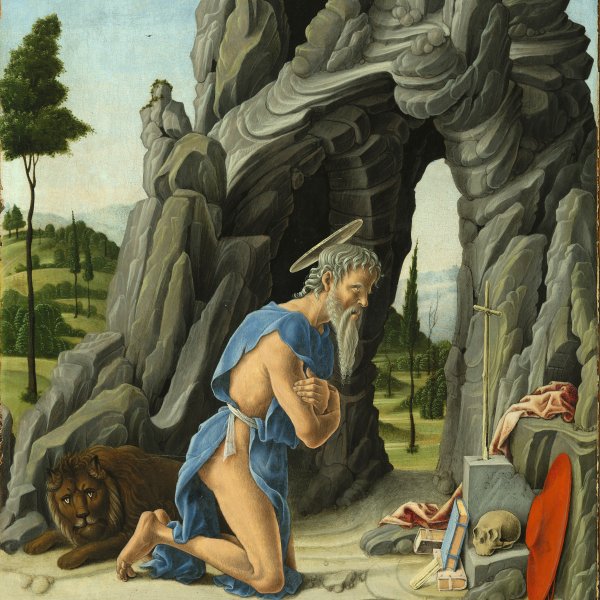Marco Zoppo
Cento, ca. 1432-Venice, ca. 1478
Marco di Ruggero, known as Marco Zoppo, was a painter of Bolognese origin. He studied with Francesco Squarcione in Padua, with whom he signed an adoption contract on 24 May 1455, but this agreement only lasted two years as Zoppo decided that it was more to Squarcione’s benefit than his own. After the contract was annulled he moved to Venice, and although he remained faithful to his Bolognese roots his style evolved towards one that combined the lessons of the great painters of the day. At the outset of his career the influence of Donatello and the Paduan school is particularly evident, of which The Virgin and Child with Angels (Musée du Louvre, Paris) is a clear example, reflecting the decorative manner of Squarcione. Zoppo’s style continued to evolve and began to reflect the work of other masters such as Mantegna. A work from this period is The Virgin and Child (National Gallery, Washington), which is notable for the pose of the figures and the drapery, while another major work of this date is the altarpiece of around 1468 for the church of Santa Giustina, of which only fragments have survived, including Saint Augustine (National Gallery, London) and Saint Paul (Ashmolean Museum, Oxford). Zoppo’s style also reveals a knowledge of the work of Andrea del Castagno and of the leading Ferrarese painters, particularly Cosmè Tura, while his later output manifests his familiarity with the art of Giovanni Bellini and Antonello da Messina, who was in Venice in the early 1470s. In general, Zoppo’s painting became more luminous and his landscape backgrounds acquird greater importance. Late works include The Virgin and Child (Lindenau Museum, Altenburg).
Zoppo was esteemed by his contemporaries and despite his early death had a large number of pupils and clients. His drawings are also outstanding and he left behind a large corpus of imaginative designs.
Zoppo was esteemed by his contemporaries and despite his early death had a large number of pupils and clients. His drawings are also outstanding and he left behind a large corpus of imaginative designs.





